Stretching. Our favourite part of a session, yet all too often that’s the only time many of us do it. Stretching not only keeps your muscles long and flexible, it provides us with full range of motion within our joints and is a first grade prevention for injury.
Stretching should be performed both pre- and post-exercise once the muscles have been warmed up and each should be held for around 20-30 seconds at a time. It is recommended that static stretches, such as the ones listed in this post, be performed after exercise. During your stretches you should feel a gentle amount of tension or mild discomfort on your muscles and never any pain – aim for a stretch of 7-8/10. The ACSM recommends most people to perform a stretching program of around 10 minutes on two to three days during the week. Stretches should be performed on major muscle groups and be repeated four or more times as per the muscle groups.
Six great stretches you can perform at home:
Hip Flexor Stretch
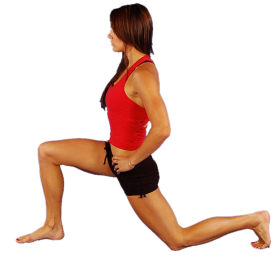 Kneeling place one foot forward whilst the other stays behind the body. Slowly push your hips towards your front knee. You should feel the stretch within your thigh and your chosen legs hip and pelvis.
Kneeling place one foot forward whilst the other stays behind the body. Slowly push your hips towards your front knee. You should feel the stretch within your thigh and your chosen legs hip and pelvis.
Hamstring Stretch
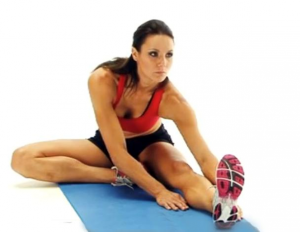 Sitting down place both your legs out in front of you. Bring one heel into the inner thigh of the opposite leg and slowly bring the torso forward until you feel a slight discomfort. This stretch should be felt in the hamstrings and towards the gluteals.
Sitting down place both your legs out in front of you. Bring one heel into the inner thigh of the opposite leg and slowly bring the torso forward until you feel a slight discomfort. This stretch should be felt in the hamstrings and towards the gluteals.
Child’s Pose
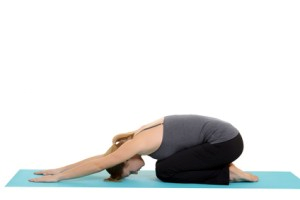 Kneeling on a matt or floor, places your feet underneath your bottom and lean your torso forward bringing your arms out in front of you as far as you can go. When your head is facing down and your arms are stretched as long as they can go lean your hips back towards your feet. This stretched should be felt in the lower back.
Kneeling on a matt or floor, places your feet underneath your bottom and lean your torso forward bringing your arms out in front of you as far as you can go. When your head is facing down and your arms are stretched as long as they can go lean your hips back towards your feet. This stretched should be felt in the lower back.
Shoulder Stretch
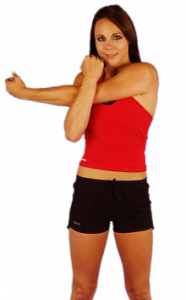 Whilst standing bring one arm over the chest and lock the opposite arms forearm around the elbow. In this position move the arm further across to get further stretch. This stretch should be felt within the upper and middle shoulders.
Whilst standing bring one arm over the chest and lock the opposite arms forearm around the elbow. In this position move the arm further across to get further stretch. This stretch should be felt within the upper and middle shoulders.
Standing Chest Stretch
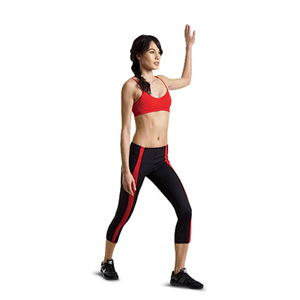 Stand side facing a wall with one arm placed at shoulder height onto the wall. Bend your elbow and rotate your body away from the wall. This stretch should be felt through the upper parts of the chest.
Stand side facing a wall with one arm placed at shoulder height onto the wall. Bend your elbow and rotate your body away from the wall. This stretch should be felt through the upper parts of the chest.
Upper Back Stretch
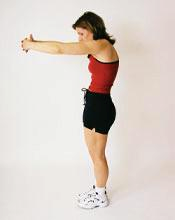 Standing upright place your hands out in front of your body and interlock your hands. Push your hands facing outwards and bring your chin to your chest, arching your back as you go. This stretch should be felt in the upper parts of the back.
Standing upright place your hands out in front of your body and interlock your hands. Push your hands facing outwards and bring your chin to your chest, arching your back as you go. This stretch should be felt in the upper parts of the back.
Reference:
ACSM’s Exercise is Medicine: A Clinician’s Guide to Exercise Prescription. S Jonas & EM Phillips. Wolters Kluwer & Lippincott, Williams & Wilkins. 2009. Philadelphia, USA. P, 114.
